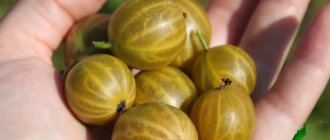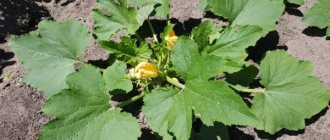Planting garden chrysanthemums
Chrysanthemums are very light-loving, so a place for planting must be chosen with the condition that it will be illuminated for at least 5 hours a day. Also, flowers are afraid of waterlogging of the soil, so it is better to plant them on a hill. The roots of the plant do not tolerate moisture retention and need sufficient ventilation, otherwise the flower will not survive the winter and will die.
Bush chrysanthemum can be planted in spring and autumn. However, according to experienced gardeners, it is worth giving preference to the spring period, so that the plant has time to take root and take root. It is better to plan planting on a cloudy day or early in the morning.
Young shoots must be pinched when the first 8 leaves appear on them - this will allow the bush to grow better. For tall varieties, be sure to prepare supports.
Tulips for March 8: varieties, planting dates and forcing methods
- Brugmansia: planting, growing, care and propagation in open ground. 75 photos of a beautiful flower
Petunia - growing from seeds. Instructions for care, propagation and planting at home (110 photos)
Disembarkation
How to plant crops correctly in the fall? The process of planting chrysanthemums in the autumn is almost no different from the spring procedure. But I didn’t plant them in the spring either. However, you should pay attention to some features:
- Soil preparation. When digging a flower bed, it is recommended to add organic fertilizers to the soil, for which peat or compost is often used. However, you should not overdo it; the amount should be no more than 600 g per square meter of soil. If there is more fertilizer, the chrysanthemum will begin to grow foliage, and this can lead to poor flowering.
- Preparation of the bush. If a purchased plant is used for planting, no special preparation is required. But if this is a transplant of plants already existing in the garden, then it is necessary to trim the roots around the specimen within a radius of 30 cm using a shovel. Due to this action, new roots will begin to form, and the chrysanthemum will more likely take root in a new place.
- Digging up a bush. To dig up a bush from an old place, you need to water it abundantly right under the root, and then dig it up along with a lump of earth.
- Disembarkation. The bushes are planted with a clod of earth. The depth of the holes should be about 40 cm. Before the event, it is recommended to spill the soil with Kornevin’s solution, then carefully place the bush chrysanthemum in the hole, sprinkle with soil, and compact it a little.
- At the final stage, all that remains is to water the plant.
After some time, the soil around the bush may settle, so you will have to add some soil. But for me it remained unchanged.
Care involves abundant watering before the first frost. You also need to keep an eye out for weeds that need to be removed. Do not forget to loosen the top layer of soil. Basically, now is the time when I have almost no weeds. So, I didn’t bother too much with it.
And now tips for the future. Chrysanthemum needs regular pruning. In small-flowered varieties, it is necessary to pinch the tops so that side shoots begin to develop. Due to this, the chrysanthemum bush begins to acquire a lush and spherical shape.
As for large-flowered species, on the contrary, their side branches need to be cut off. With the onset of the first frosts, the soil should be mulched with sawdust or straw. Before the arrival of winter, chrysanthemum bushes must be insulated.
Care
Chrysanthemums prefer abundant watering and loose soil. When watering, try not to drip on the leaves.
Remember to fertilize: at least three times during the growth period. The choice should be made in favor of nitrogen and phosphorus-potassium, they will help the plant grow lush foliage and a large number of inflorescences.
Caring for chrysanthemums in the open ground
Chrysanthemums of any type are very demanding when it comes to watering, especially in dry, hot weather. With a lack of moisture in the soil, the leaves lose turgor, the stems become woody, and the quality of flowering deteriorates. For full development, the plant must meet certain conditions. Chrysanthemum is heat-loving and demanding of light, so you should not plant it in the shade. Choose a well-warmed, illuminated place for it.
Globular chrysanthemum
The soils are preferably loamy and fertile. When preparing for planting, humus, compost, peat, and ash are added; to improve water permeability on clay soils, sand is added, dug up, and plants are planted. It is advisable to feed chrysanthemums throughout the season.
At the beginning of spring, when the green mass is just beginning to grow, nitrogen-containing fertilizing is done with ammonium nitrate or urea (1 tablespoon per bucket of water). Subsequent ones, at intervals of two to three weeks, are preferably complex, with a reduced nitrogen content, since nitrogen stimulates intensive growth to the detriment of flowering. Complex organic-mineral fertilizers allow plants to receive all the necessary components for the balanced development of the root system, green and flower mass. As the last winter feeding, it is advisable to use superphosphate, scattering it on the surface of the soil around already trimmed bushes. The granules, which are practically insoluble in water, will gradually disperse under the influence of snow, and with the melting of the snow they fall into the soil, delivering the necessary elements exactly to the address.
Indoor chrysanthemums
Homemade chrysanthemums are usually small in size and bloom profusely, but the flowers are small, from 2 to 5 cm in diameter.
There are three main varieties:
- Chinese
- Indian
- Korean
Caring for chrysanthemums at home is not difficult. Lighting, temperature and watering are the three main conditions under which the plant will feel comfortable and enjoy long-lasting flowering.
Types and varieties
There are many varieties of chrysanthemums; the countries of East Asia are considered their homeland. It is in this part of the world that chrysanthemums are considered a symbol of good luck, luck, love and home comfort.
Small-flowered chrysanthemum
In street conditions, both low-growing or border chrysanthemums and tall varieties are common. There is no point in growing tall varieties indoors; they will not look presentable, and they will take up a lot of space. That is why it is customary to grow only low varieties of this plant indoors.
The most popular among flower growers are:
- Chinese or mulberry
- korean short
- Indian
All of them are initially intended only for indoor spaces, but if possible, they can be planted in open ground for the summer. There they will gain strength and, after being transplanted into a pot in the fall, they will decorate the windowsill with lush blooms for a long time until the New Year.
Chinese varieties
Most often, our stores offer low-growing varieties from Chinese selection.
Their general characteristics are as follows:
- the bush during the growing season can reach 17-65 cm
- the leaves are dark green in color
- flowers can be both small and large
- there are hanging types
Dwarf chrysanthemum
The varietal forms “Charm” are especially popular. Baskets-inflorescences delight the eye for a long time with their variegated colors and fold into a large ball.
Dwarf “Minimum” ones are easy to distinguish from the rest:
- they rarely reach 20 cm in height;
- leaves are small, dark in color;
- flowers can be small and medium-sized, practically never reaching large sizes;
- With proper care, flowering lasts up to 2.5 months.
The color range of inflorescences is very diverse; there are both single-color varieties and mixed colors.
Cascading ones are often used for landscaping balconies, verandas and terraces. It is the hanging chrysanthemums of Chinese selection that will be able to bring a bit of warmth until late autumn; yellow, white and red species are especially valued.
Korean shorts
A beautiful ball on the windowsill, even without flowers, pleases the eye all summer; closer to autumn, it gradually begins to be covered with small and large flowers, while maintaining its shape until the last. This is how chrysanthemums, whose homeland is Korea, are characterized; multiflora is considered their most common variety.
The most popular pom-poms are:
- "Orange Jam"
- "Navare"
- "Stella"
Chrysanthemum of Korean selection
Their diversity cannot be described; the color of the flowers can be very different. The most valuable varieties are those with bluish and green baskets.
Varieties from India
Indian varieties are characterized by a small bush size , their foliage is lighter in color, and the flowers are usually small or medium-sized. They are real sissies; they can only be grown successfully in pots; open ground, even in summer, can be destructive for them.
Indian variety
Varieties rarely form a ball, even with regular pinching; most often their crown turns out like a flat dish . The color of flowers can be varied; most often, orange, pink, burgundy, and yellow flowers appear on store shelves. It is Indian varieties that are most often grown in winter gardens and greenhouses.
Watering
Don't forget to water and spray the plant regularly. Chrysanthemum loves water, so watering should be done twice a week.
But do not overdo it: water should not accumulate in the pan. In the warm season, it is advisable to spray the leaves in the morning and evening.
Queen of the Autumn Garden
This popular autumn garden flower will not bring much trouble and readily responds to the care shown, generously endowing others with its beauty and aroma.
In eastern countries, chrysanthemum is especially revered; many legends, poems and songs have been written about it. It is considered a symbol of happiness and prosperity. The chrysanthemum is included in the national emblem of Japan, symbolizing the sun. The highest award of the Land of the Rising Sun is the Order of the Chrysanthemum.
One of the ancient legends says that an evil dragon wanted to deprive people of warmth and steal the sun from them, but burned its paws with a hot fireball and threw it away. A scattering of solar sparks, hitting the ground, turned into chrysanthemum flowers.
Chrysanthemum is an autumn flower, it blooms en masse in late August - early September and this extravaganza of color continues until November or even December! Low-growing border beauties start, gracefully weaving their notes into the still multi-colored ensemble of the garden, then the time comes for medium-growing varieties. By the end of September - beginning of October, the most powerful, tall chrysanthemums bloom, continuing their chic solo until late autumn, pleasing the eye and warming the heart. Spreading the tart smell of the coming winter, still warmed by the changeable autumn sun, magnificent chrysanthemums see off the departing warmth with a victorious chord...
Care after flowering
Do not neglect the rules of caring for chrysanthemums after the flowering period. Dry inflorescences must be removed and shoots must be trimmed.
The pot with the plant should be placed in a cool place and left there until spring. When new shoots appear, the flower is replanted and returned to its original place at room temperature.
Winter storage
Frost-resistant varieties of chrysanthemums are recommended to be left in the soil for the winter. To do this, the plant must be cut to a height of 20 cm from the ground. Then sprinkle the bush with fallen leaves or black soil. During frosts at night, cover the flowers with cellophane.
There is another overwintering technique - hide the dug bushes underground. Closer to frost, it is recommended to pull out the flowers along with a lump of earth and put them in a cold room. Then the plant is in a dormant stage, and young shoots are not formed.
Chrysanthemums are flowers of joy, a symbol of the sun. The main advantage of plants is their autumn flowering; they bring a good mood and decorate the garden plot with their uniqueness.
Pests and diseases of chrysanthemums
Diseases
If the chrysanthemum is in unsuitable conditions for it and does not receive proper care, then it can be affected by fungal diseases such as septoria, powdery mildew and gray rot.
If a plant is affected by powdery mildew, then a whitish coating forms on its petioles, foliage and stems. Over time, it thickens and becomes brown, which is why the decorative effect of the chrysanthemum suffers. To cure a flower, it should be treated with a solution of a fungicidal drug, for example: Topsin, Skor, Fundazol or Topaz.
In chrysanthemums affected by septoria, spots of rusty or brownish-gray color with a yellow edging appear on the foliage. Over time, these spots increase and eventually occupy the entire surface of the leaf plate. In the middle of such spots, fungal pycnidia appear, which are black dots. Affected shoots and foliage begin to dry out, the stems turn brown, wrinkle and bend. Try to isolate the affected bush from other plants. Cut off all diseased stems and foliage, then spray it with a solution of Oxychom, Kuproxate or copper sulfate. You can place the bush next to other indoor flowers only when it has fully recovered.
A chrysanthemum affected by gray rot, also called botrytis, is relatively difficult to cure. In this case, a fluffy gray coating forms on the surface of the above-ground parts of the plant, the tissues of the flower underneath die and rot appears. To cure a plant, it should be treated with a solution of Bordeaux mixture, and it is best to spray the bush before flowers form on it.
Chrysanthemums Home storage PEST control
Harmful insects
Chrysanthemum nematodes, slobbering pennies, aphids or thrips can settle on the bushes. Pennies, thrips and aphids are sucking harmful insects that suck out the cell sap from the plant. To get rid of them, the flower is sprayed with a solution of an insectoacaricidal agent, for example: Derris, Biotlin, Actellik, Confidor or Aktara.
The nematode is a very small thread-like worm that cannot be seen with the naked eye. The fact that such a pest has settled on the plant can be understood by the mosaic white spots that appear between the veins of the lower leaf blades. Over time, these spots turn brown. After a while, the affected foliage curls, dries out, and flies away, while mosaic spots begin to form on the upper leaf plates. As a rule, bushes are affected by nematodes through a substrate that has not been disinfected. It is impossible to cure a flower affected by a nematode; therefore, it will have to be burned along with the soil mixture in the pot.











